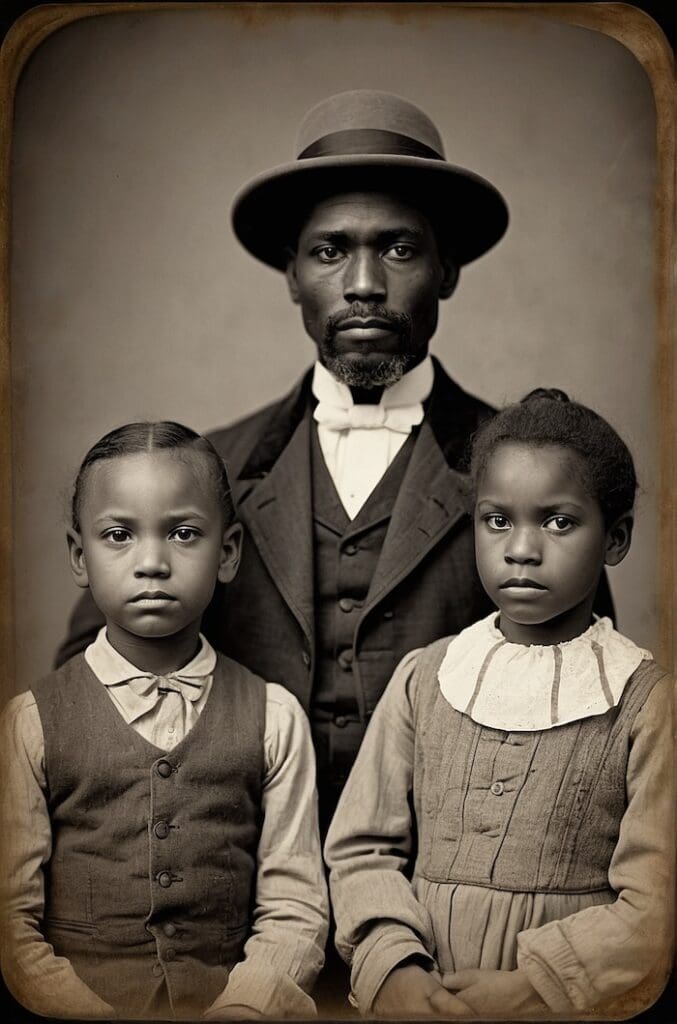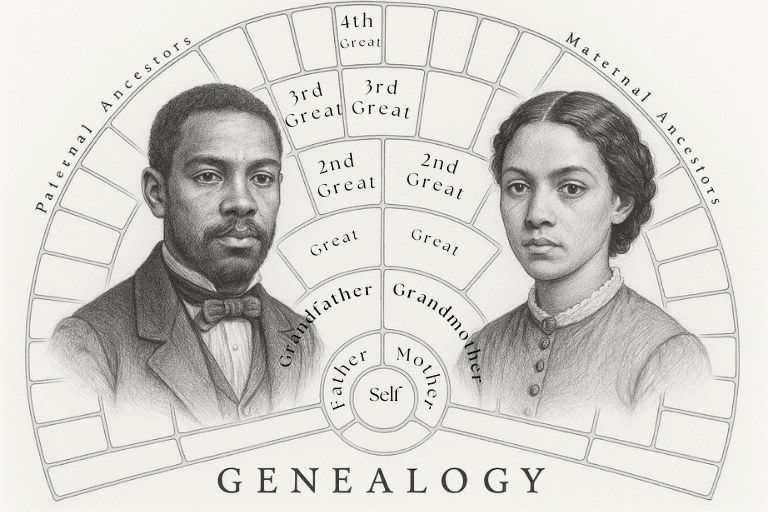
Getting Started with Research
Discover Your African Heritage
Here are 10 steps to help you get started reclaiming your African roots.
1- Write What You Know
Before diving into online research, begin with yourself and work backwards. Write down everything you already know about your family — names, birthplaces, birth dates, marriage dates, death dates, and locations. Include stories, traditions, and any details you recall, no matter how small they may seem. Personal memories, old letters, and conversations with relatives are just as valuable as official records at this stage.
To stay organized, print out a pedigree chart — a simple family tree form that visually maps your direct ancestors — and start filling in the blanks. Start with yourself, then add your parents, grandparents, and great-grandparents.


2-Artifacts around the Home
Before turning to libraries and archives, search within your own home — and the homes of relatives — for family artifacts that can reveal important details about your ancestors.
Some Artifacts to Look For:
- ➡️ Family Bibles with handwritten names, births, marriages, and deaths
- ➡️ Photographs (especially old ones with dates, places, or names written on the back)
- ➡️ Marriage certificates and divorce records
- ➡️ Birth and death certificates
- ➡️ Military service records, draft cards, or discharge papers, School records, yearbooks, diplomas
- ➡️ Obituaries and funeral programs, Newspaper clippings about family members
- ➡️ Wills and probate records, Land deeds, tax receipts, and property records
- ➡️ School records, yearbooks, diplomas
3-Interview Relatives
Connecting with your family members is a vital step in building your family tree. Reach out to parents, siblings, aunts, uncles, cousins, and even more distant relatives to help fill in the missing pieces of your pedigree chart. Their memories, stories, and personal knowledge can provide invaluable details that official records may overlook. Approach these conversations thoughtfully — often, a simple memory can unlock an entire generation of history.

4-Create a FamilySearch Account
5-Create Your Own Family Tree
Creating a family tree on FamilySearch.org isn’t just about tracing names; it’s about preserving history, connecting across generations, and participating in a global community effort to reconstruct the human story.
Unlike building a private tree on paper or isolated software, FamilySearch offers living, collaborative, and enduring preservation — for free.

6-Search for Existing Ancestors
Relatives often hold unwritten knowledge that can’t be found in records—stories, relationships, nicknames, or migration details. Once lost, these details may never be recovered. Many African American families, for example, face challenges like:
- ➡️ Missing or destroyed records from slavery, segregation, or rural communities.
- ➡️ Name changes or misspellings in documents.
- ➡️ Relatives can't confirm identities, explain inconsistencies, and connect generations.
- ➡️ Suggest which surnames, churches, or occupations to focus on.
- ➡️ Reveal where to look (e.g., a town in Mississippi, a military enlistment).
7-Look for Blanks
Using visual tools like a fan chart or pedigree chart can help you easily identify missing family information—such as unknown parents, birthplaces, or dates. These charts make gaps in your family tree stand out, guiding your next steps in research.


8-Search for Historical Records
To embark on historical research, both federal and state archives offer a wealth of resources. Here’s a guide to help you navigate these repositories effectively on FamilySearch:
- ➡️ Discover your roots and unlock your future.
- ➡️ Find your African American Ancestors
- ➡️ Records Search - Find historical documents.
- ➡️ FamilySearch Labs - Available Experiments
- ➡️ Catalog - Search archival collections.
- ➡️ Research Wiki - Get research guidance.
- ➡️ Books - Access digital genealogy books.
- ➡️ Images - View unindexed historical images.
- ➡️ Genealogies - Search uploaded family trees.
- ➡️ Cemeteries Search - Most Searched United States Cemeteries
9-Add Photos and Stories
Preserve your family’s legacy by uploading cherished photographs and personal stories to the Memories section of FamilySearch.org. These meaningful additions help breathe life into names and dates, transforming your genealogy into a rich tapestry of real people, real moments, and real connections. Whether it’s a portrait from the 1800s or a story passed down at family reunions, every memory adds depth and personality to your family tree—and ensures your ancestors’ voices are never forgotten.


10-Work Together as a Family
Genealogy is more than tracing names—it’s about connecting lives across generations. Involving your family turns research into a meaningful shared experience. Ask older relatives to share memories, stories, or family traditions. Encourage younger members to scan photographs, label heirlooms, or help build the family tree online.
This teamwork not only uncovers new branches in your lineage but also strengthens family bonds. By working together, you create a legacy of unity, pride, and remembrance—ensuring that your ancestors’ stories continue to inspire future generations.

